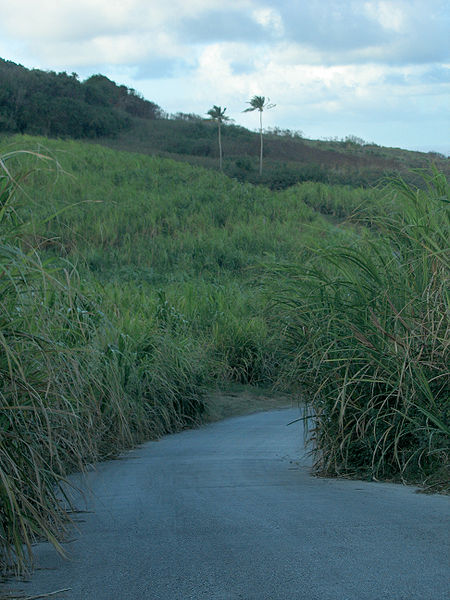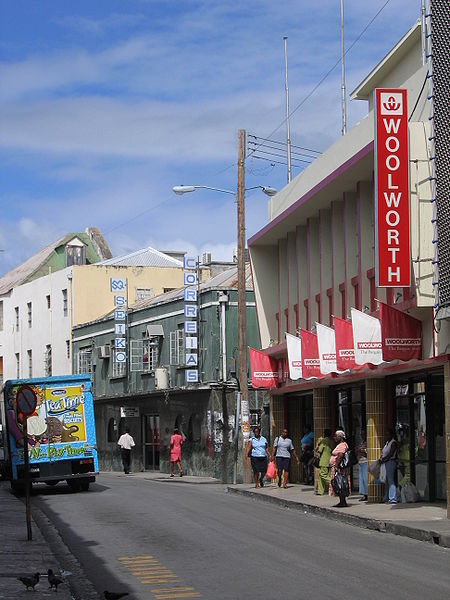Since the island country's independence in 1966, the economy of Barbados has been transformed from a low-income economy dependent upon sugar production into a high-income economy based on tourism and the offshore sector. Barbados went into a deep recession in the 1990s after 3 years of steady decline brought on by fundamental macroeconomic imbalances. After a painful re-adjustment process, the economy began to grow again in 1993. Growth rates have averaged between 3%–5% since then. The country's three main economic drivers are: tourism, the international business sector, and foreign direct-investment. These are supported in part by Barbados operating as a service-driven economy and an international business centre.
Central Bank of Barbados
The cultivation of sugar cane, such as the cane growing in this field outside Saint Andrew, has always been a big part of the island's economy.
Bathsheba, Saint Joseph
The independent Woolworth store on Prince William Henry Street, Bridgetown
The Central Bank of Barbados (CBB) is the national monetary authority and central bank responsible for providing advice to the Government of Barbados on banking and other financial and monetary matters. The Central Bank of Barbados, was established by Act of parliament on 2 May 1972. Prior to the establishment of CBB, Barbados' monetary policies were governed through its membership in the Eastern Caribbean Currency Authority (ECCA). The Central Bank operates as the banknote issuing authority for Barbadian currency.
CBB headquarters in Bridgetown
The Tom Adams Financial Centre building.






